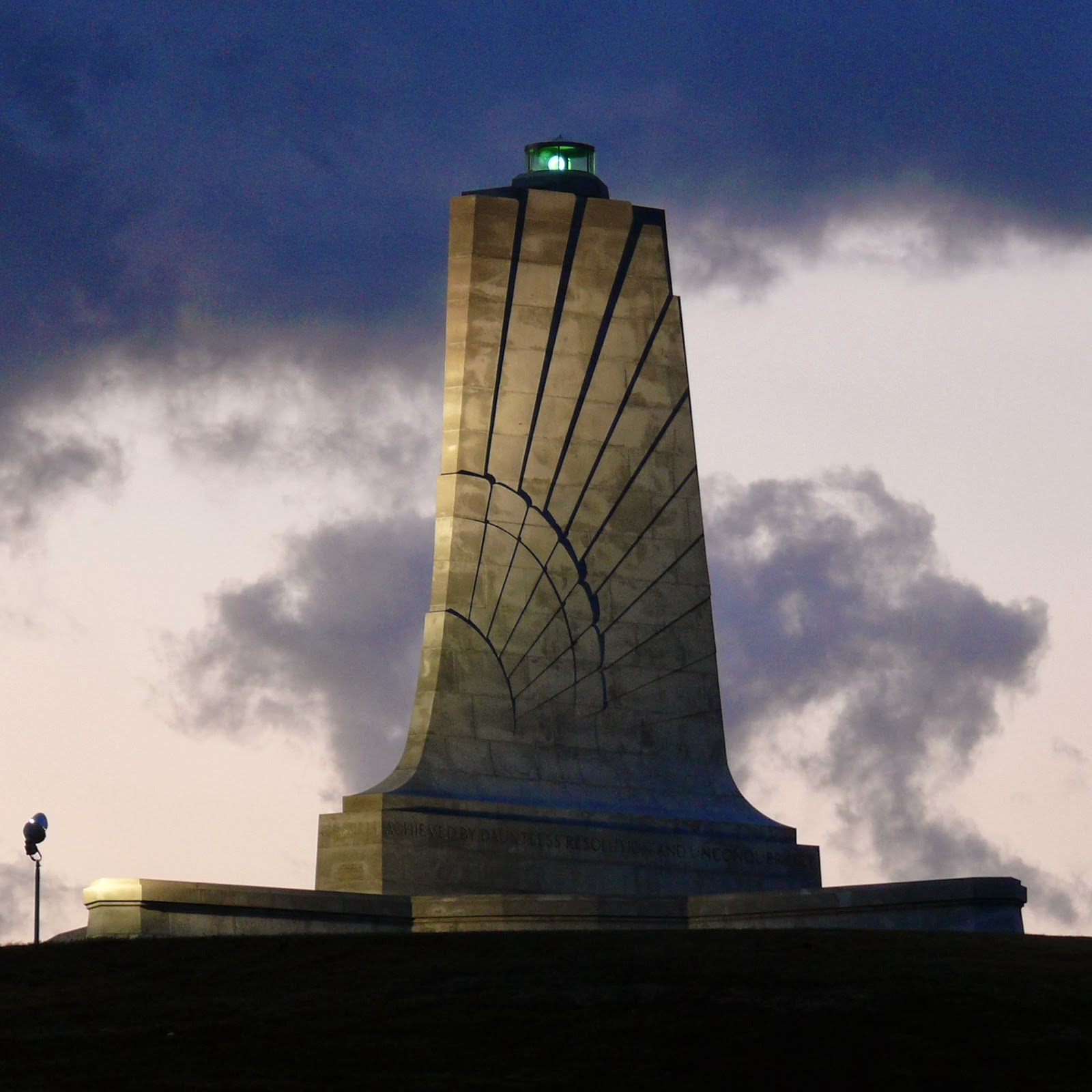Today is the 85th anniversary of the Wright Brothers' first flight at Kill Devil Hills, Kitty Hawk, North Carolina. In attendance that day was William J. Tate, the lightkeeper of the Currituck Sounds lights. These were a series of small beacons to serve the shipping traffic in one of the protected sounds enclosed by the Outer Banks. Tate was in charge of a total of 42 small lights spread over a distance of 65 miles. These were lighted, mostly, with 8 day kerosene lanterns hung from posts and tripods.
From 1900-1903, Tate served as Postmaster of Kitty Hawk. He is pictured above with his wife and daughters and a friend on the porch of the post office. (Photo from the library of Congress.) Tate gained famed for his lifesaving skills on the Outer Banks, but he is more famous because he assisted the Wright Brothers in their effort to make the first successful flight. He sent weather and topographical information to the Wrights in Ohio, trying to convince them Kitty Hawk was the best place to try out their flying machines. (A piece of his correspondence is below, courtesy of the Library of Congress.) When the brothers visited the Outer Banks for the first time to scout out a place to experiment with flights, they boarded with Tate and his wife. The Wrights assembled their first experimental glider in the Tate's front yard, and Mrs. Tate offered up her sewing machine for the fabrication of sateen wing covers. The sewing machine is now on display in the Wright Brothers Museum at Kitty hawk.
Following the success of the Wright Brothers, Tate developed a great interest in aviation and remained in contact the Orville and Wilbur Wright. He served as the lightkeeper of the North Landing Lighthouse on the Outer Banks from 1919-1939. In 1920 he became the first man make an inspection of lighthouses by airplane. The U.S. Lighthouse Service Airways Division began in 1926, buoyed by Tate's work and an increasing need for ground-based guidance for aircraft. The Division was responsible for providing airway navigation beacons for all fliers, but especially for airmail pilots. Scott Price, an archivist in the U.S. Coast Guard Historian's Office in Washington, D.C. has an excellent article on Tate and the birth of the U.S. Lighthouse Service Airways Division. http://www.uscg.mil/history/articles/indispensable_men.asp
In 1928, Tate paid $200 to have this memorial erected in his yard at Kitty Hawk. It underscored his pride at having participated in such a landmark event in history. More information about Tate and this picture can be found on www.wright-brothers.org.
Here's an image of Tate in his later years, from www.wright-brothers.org.
The Coast Guard honored William J. Tate in the 1990s by naming a Keeper Class buoy tender for him. The cutter is based in Philadelphia.
A bit of trivia: When the Wright Brothers Monument was built years after that first historic flight, the U.S. Lighthouse Service was asked to design and install the beacon for it. The monument features an antique "Fresnel on the Half-Shell," a special optic developed by the U.S. Lighthouse Service in the 1920s for airway use. (Photo below by Ken Thomas on Wikimedia Commons.)






No comments:
Post a Comment
I welcome your comments, photos, stories, etc.!